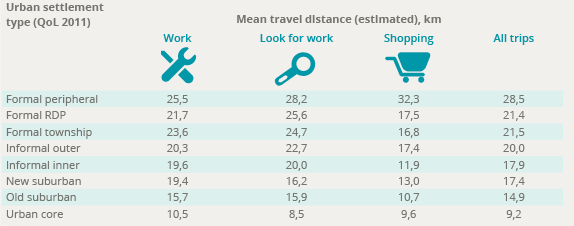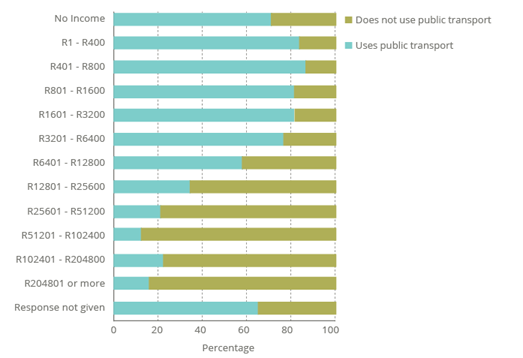A global effort to create social, economic and environmentally sustainable cities hinges on an urban population’s ability to access economic opportunity cheaply and reliably. This can take the shape of dense, mixed-use pockets, where opportunity is integrated into high density housing areas, or where a significant public transport network is able to connect residents safely and efficiently with zones of economic, social and cultural activity. However, Gauteng’s urban development, and public housing in particular needs to relate better to transport nodes created by new networks. More mixed-use, public housing development suitable to a range of qualifiers is required along public transport corridors to enable access to urban centres and work.
Respondents from peripheral areas travel further to access their work, shopping and/or employment opportunities. The distance that all household types are required to travel further depicts the continued sprawling urban form of the province.
Trip distance according to settlement type and trip purpose







